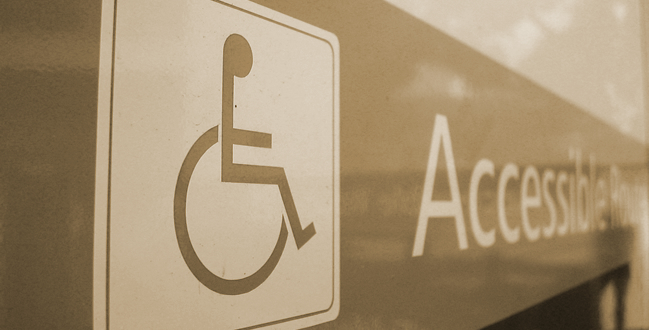
There are ranges of evaluation methods that assist developers or designers to create usable and pleasant electronic products, services, or environments for the target audience, including older and disabled people. However, to build a product, service or environment for older and disabled people, the criteria of evaluation may be different because they may have specific needs and require different assistance. Thus, for this topic, the overview of accessibility and its relation to usability will be introduced.
The overview of accessibility: two definitions of accessibility

According to the International Standards Organization (ISO), it defines accessibility as—the usability of a product, service, environment or facility by people with the widest range of capabilities, which can be thought as the maximum possible set of specified users accommodated for the product or service and its concept is similar to universal design and design for all philosophy. However, accessibility is also used to refer products, services, or environments that are specifically usable by disabled people. For example, Web Accessibility Initiative (WAI), found by the World Wide Web Consortium (W3C), defines web accessibility as—people with disabilities can perceive, understand, navigate, and interact with the Web. The definition of WAI suggests that accessibility is concerned about the issues with older and disabled people, whereas the ISO suggests accessibility is about the issues for the largest range of users, including older and disabled people.
Although the concept and situation of accessibility is not that clear as the definition of usability offered by ISO (usability: the extent to which a product can be used by specified users to achieve specified goals with effectiveness, efficiency, and satisfaction in a specified context of use), the definition of accessibility, especially focusing on issues with disabled people, provided by WAI are currently widely acceptable in respect to user interfaces and websites.
WAI has promoted conformance to the Web Content Accessibility Guidelines (WCAG) as the criteria for achieving and measuring accessibility. There are four principles associated with a list of guidelines addressing the issues around the principles:
- Content must be perceivable
- Interface components in the content must be operable
- Content and controls must be understandable
- Content should be robust enough to work with current and future user agents
Accessibility and its relation to usability when designing interface and web

Put simply, for designing user interfaces or websites, usability means designing the interfaces or websites to be effective, efficient, and satisfying, while accessibility means designing the interfaces or websites to be perceivable, understandable, navigable, and interactable, especially for older and disabled people. There are some overlappings between accessibility and usability. For example, a more understandable and navigable interface can enhance the use of efficiency or satisfaction. Thus, when designing websites, it may be not useful to differentiate between usability and accessibility because it is not clear what should be included in accessibility standards and what shouldn’t be included in usability standards, vice versa.
However, some experts suggest that one way to look at the distinction between these two is to categorize interface problems:
- Usability problems impact all users equally, including disabled people.
- Accessibility problems, especially technical aspects (such as screen reader or magnifier), decrease people with disabilities to access a website.
Based on the above two categories and the widely accepted definitions provided by ISO(usability) and WAI(accessibility), we may conclude that, for the aim of equal use for everyone, a website is not usable unless it is accessible, meaning disabled people can use and access the website, and usability may imply accessibility but the contrary is not necessarily true when designing interfaces and websites.
Conclusion
The needs of people with disabilities are often ignored in usability practice and research, but after learning and understanding what is accessibility, I think user experience designers should address accessibility (includes technical aspect) and usability together, so that we can build a more usable, accessible interface and website for everyone.
References
Petrie, H., & Bevan, N. (2009). The Evaluation of Accessibility, Usability, and User Experience. Retrieved from https://pdfs.semanticscholar.org/6896/17fb8d66ec0d3cd2e1012171461c22f4c6f5.pdf.
Petrie, H., & Kheir, O. (2007, April). The relationship between accessibility and usability of websites. In Proceedings of the SIGCHI conference on Human factors in computing systems(pp. 397-406). ACM. Retrieved from http://www-course.cs.york.ac.uk/advt/2013-14/classes/class10/materials/petrie%20and%20kheir.pdf
W3C. Web Accessibility Initiative. Retrieved from https://www.w3.org/WAI/gettingstarted/
Mifsud, J. (2011, June). The difference between web site usability and accessibility. UsabilityGeek. Retrieved from https://usabilitygeek.com/the-difference-between-web-site-usability-and-accessibility/